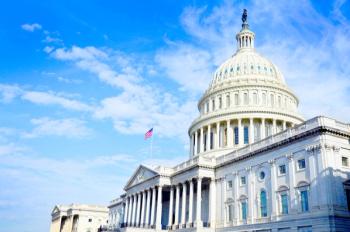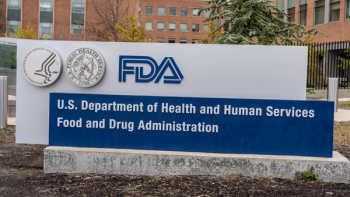
- Pharmaceutical Executive-06-01-2014
- Volume 0
- Issue 0
What Price Innovation?
Payers are seeking clear assessment of drug value to rationalize high drug prices. This issue has moved to center stage due to mounting concern over the high price for Gilead's Sovaldi, writes Jill Wechsler.
Americans want new life-saving medicines that cure serious conditions and are affordable, as well as safe and effective. They still prefer market competition to accomplish this, recognizing that government-funded research, together with appropriate regulatory oversight, has created a public-private collaborative approach that has made the U.S. the predominant source of cutting-edge biopharmaceutical innovation in the world. Genetic discoveries and new technologies continue to spur new research, raising optimism that more new drugs will emerge, able to prevent and cure many serious health conditions afflicting millions of patients in all regions. Yet, changing markets and public funding pressures require new ways for U.S. health programs and private payers to evaluate the cost of increasingly expensive innovation.
Jill Wechsler
These issues have moved to center stage due to mounting concern over the high price for Sovaldi (sofosbuvir), Gilead's new therapy for hepatitis C virus that generated a record-breaking $2.3 billion in revenues for its first quarter. Johnson & Johnson's Janssen Therapeutics' new hepatitis C treatment, Olysio, costs $66,000 for 12-week treatment, slightly less than the $88,000 for Sovaldi. But because millions of patients with hepatitis C may be candidates for treatment, total outlays will soar more. Payers fear, moreover, that coverage decisions for Solvaldi will set the stage for similar action on a wave of important new treatments for serious chronic conditions such as Alzheimer's disease and diabetes; a new class of drugs for certain high cholesterol patients may have an even bigger cost impact than the new hepatitis treatments.
Oncologists face related issues, as the cost of branded cancer therapies has increased to $10,000 a month from $5,000 a decade ago, according to a report from the IMS Institute for Healthcare Informatics. The American Society of Clinical Oncology has published targets for "meaningful" clinical trial outcomes to encourage patients and physicians to look closely at treatment value. ASCO also has proposed a bundled payment system to simplify reimbursement and equalize financial incentives for prescribing oral versus injectible cancer drugs.
Pharmacy benefit managers (PBMs) and health plans are looking to manage rising drug expenditures by discouraging inappropriate prescribing, encouraging adherence by patients likely to benefit, and promoting approval of similar, competing drugs by the FDA to generate competition able to drive down prices.
Steve Miller, chief medical officer at Express Scripts, acknowledges that Sovaldi is "a much better drug" than previous hepatitis C therapies, which had serious side effects and required months of treatment. But the potential outlay for the drug is unprecedented, he pointed out at the recent Pharmaceutical Care Management Association (PCMA) policy forum. "Innovation doesn't have to cost more," he said, citing cost-cutting discoveries in other markets and countering the usual pharma claim that costly new medicines reduce downstream provider outlays.
Miller also complained that Sovaldi costs less in other countries, putting U.S. companies at a competitive disadvantage in the global marketplace. A $900 price tag in Egypt, Miller noted, creates a strong case for widespread "medical tourism."
The situation is even more dire for state Medicaid programs, which often have open formularies that cover most approved drugs. While new, effective cures for disease are exciting, noted Matt Salo, executive director of the National Association of Medicaid Directors, states are "in a panic" about how to pay for the 4-5 million patients in the U.S. with hepatitis C, many covered by Medicaid. Colorado and Pennsylvania have said they will limit Sovaldi to patients with advanced liver disease, and delay treatment for others. The Department of Veterans Affairs and the California Technology Assessment Forum take a similar position, despite charges of "rationing" from patient advocates.
Streamlining R&D
The prospect of even more high-cost specialty drugs has spurred initiatives to make drug development and clinical research more efficient. There's interest in more public-private collaboration on new research tools and faster identification of potentially effective compounds. Many of the recently negotiated billion-dollar corporate acquisitions and asset exchanges aim to strengthen drug development pipelines by shifting a company's focus to treatment areas where they have greater expertise. That strategy may be effective, as seen in warnings from payers that pharma research consolidation will reduce market competition.
Congress weighs innovation
FDA has adopted multiple strategies to speed drug development and review. The breakthrough drug designation is a "game changer" for addressing serious, life threatening conditions, commented Janet Woodcock, director of the Center for Drug Evaluation and Research (CDER), at the annual meeting of the Food and Drug Law Institute in April. CDER received 144 requests for breakthrough designation through April 4, granted 40 and denied 70, Woodcock reported, noting that the requests are not just for cancer drugs, but also for antivirals and other conditions. Last year, nearly half of all new molecular entities approved by FDA took advantage of some expedited review pathway, and several were approved in less than six months.
A related idea, designed to minimize the impact of new medical technologies on rising health care expenditures, is to extend FDA mechanisms for expediting approvals to drugs also likely to cut costs. A recent Rand Corp. study on "Redirecting Innovation in U.S. Health Care" further proposes more coordination between FDA approvals and Medicare coverage decisions, which again would favor money-saving technologies. FDA and Medicare consideration of cost issues in regulatory and coverage decisions would require legislation, as well as methods for determining how and when a new product truly has economic benefits.
These discussions may lead to adoption of specific Congressional proposals, possibly through legislation to renew prescription drug user fees for 2017. There are bills before Congress to expand incentives for developing new antibiotics to address drug-resistant infectious diseases, and growing concern on Capitol Hill about rampant abuse of prescription painkillers and opioids. These issues may gain impetus as negotiations between FDA and industry on PDUFA VI move forward in the coming year.
Jill Wechsler is Pharm Exec's Washington correspondent. She can be reached at
Articles in this issue
over 11 years ago
Promoting Adherence: From Force to Finesseover 11 years ago
The Urge to Mergeover 11 years ago
Immunotherapies: The New Hope for Cancer Treatmentover 11 years ago
Pharma 50 Trends: Past, Present, and Futureover 11 years ago
Pharm Exec's Pharma 50 2014over 11 years ago
Social Media and the In-House Counselover 11 years ago
Hopes High as EU Heads Into Leadership ChangeNewsletter
Lead with insight with the Pharmaceutical Executive newsletter, featuring strategic analysis, leadership trends, and market intelligence for biopharma decision-makers.




